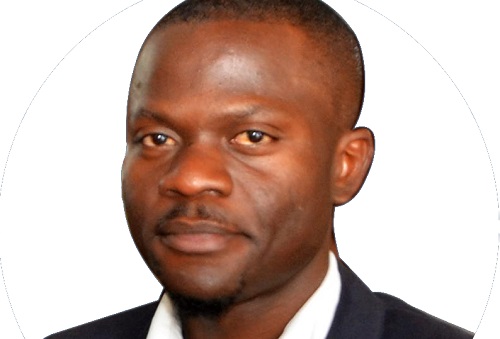
Title: Blablabla Virtualisation
Date and Place: 22/02/2019 at 11:00 in TD-C
Host: Jean-Marie Gorce and Florent de Dinechin
Abstract:

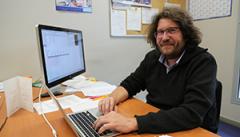
Wired team presentation and discussions about blockchain
La blockchaines sont des technologies de stockage et de transmission d’informations, permettant la constitution de registres répliqués et distribués, sans organe central de contrôle, sécurisées grâce à la cryptographie, et structurées par des blocs liés les uns aux autres, à intervalles de temps réguliers. Elles sont utilisées par un certain nombre d’acteurs et suscitent de très nombreux débats aussi bien au coin café qu’à l’organisation mondiale du commerce.
En tant que membre du laboratoire de recherche CITI, je me sens concerné par ces technologies, et me demande de ce que nous devons en faire.
Je propose dans ce séminaire de vous présenter ma compréhension des systèmes blockchaines et de vous partager mon point de vue de concepteur d’applications distribuées et pair-à-pair sur le Web.
Stéphane Frénot a participé à la création du CITI en 2001. Il est spécialisé dans le génie logiciel et les application distribuées. Il a été responsable du thème middleware et de l’équipe INRIA Amazones au laboratoire. Puis il a participé au projet exploratoire INRIA Dice sur les plateformes d’intermédiations. Depuis 1an il est directeur du département Télécommunications Service et Usages de l’INSA où il enseigne le génie logiciel, les systèmes distribués et l’innovation.
Il a travaillé sur les architectures à composants logiciels, les systèmes pairs-à-pairs pour le déploiement de composants et sur un modèle de programmation orienté flux pour Javascript. Il a participé au dépôt de trois brevets : dans l’iot domestique, dans les flux javascript et dans un protocole de vote. Enfin il est responsable du développement de la plateforme Jumplyn de gestion de projets étudiants actuellement en test sur l’INSA pour la gestion des stages.
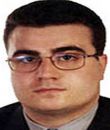
Wireless Networks Design in the Era of Deep Learning: Model-Based, AI-Based, or Both?
This work addresses the use of emerging data-driven techniques based on deep learning and artificial neural networks in future wireless communication networks. In particular, a key point that will be made and supported throughout the work is that data-driven approaches should not replace traditional design techniques based on mathematical models. On the contrary, despite being seemingly mutually exclusive, there is much to be gained by merging data-driven and model-based approaches. To begin with, a detailed presentation is given for the reasons why deep learning based on artificial neural networks will be an indispensable tool for the design and operation of future wireless communications networks, as well as a description of the recent technological advances that make deep learning practically viable for wireless applications. Our vision of how artificial neural networks should be integrated into the architecture of future wireless communication networks is presented, explaining the main areas where deep learning provides a decisive advantage over traditional approaches. Afterwards, a thorough description of deep learning methodologies is provided, starting with presenting the general machine learning paradigm, followed by a more in-depth discussion about deep learning. Artificial neural networks are introduced as the peculiar feature that makes deep learning different and more performing than other machine learning techniques. The most widely-used artificial neural network architectures and their training methods will be analyzed in detail. Moreover, bridges will be drawn between deep learning and other major learning frameworks such as reinforcement learning and transfer learning. After introducing the deep learning framework, its application
to wireless communication is addressed. This part of the work first provides the state-of-the-art of deep learning for wireless communication networks, and then moves on to address several novel case-studies wherein the use of deep learning proves extremely useful for network design. In particular, the connection between deep learning and model-based approaches is emphasized, proposing several novel techniques for cross-fertilization between these two paradigms. For each case-study, it will be shown how the use of (even approximate) mathematical models can significantly reduce the amount of live data that needs to be acquired/measured to implement data-driven approaches. For each application, the merits of the proposed approaches will be demonstrated by a numerical analysis in which the implementation and training of the artificial neural network used to solve the problem is discussed. Finally, concluding remarks describe those that in our opinion are the major directions for future research in this field.

Some good linear codes from functions over finite fields and their applications
This talk is divided in two parts: the first part is a contribution on the construction of new linear p-ary codes (from bent functions and plateaued functions in any characteristic) for secret sharing and two-party computation. The second part is a contribution on the construction of new locally recoverable codes (LRC codes) for storage. Below, more details.
Part 1: The first part of this talk is devoted to minimal linear codes from bent/plateaued functions in any characteristic. We will present two generic constructions of linear codes involving special functions and investigate constructions of good linear codes based on the generic constructions involving bent and plateaued functions over finite fields. More specifically, we present new minimal linear codes with few weights from weakly regular bent/plateaued functions based on generic constructions.
Part 2: In 2014, a family of optimal linear locally recoverable codes (LRC codes) that attain the maximum possible distance (given code length, cardinality, and locality) is presented by Tamo and Barg. The key ingredient for constructing such optimal linear LRC codes is the so-called r-good polynomials, where r-1 is equal to the locality of the LRC code. However, given a prime p, known constructions of r-good polynomials on some extension field of GF p exist only for some special integers r, and the problem of constructing optimal LRC codes over small field for any given locality is still open. We present in the second part of this talk general methods of designing good polynomials, which lead to new constructions of r-good polynomials. Such polynomials bring new constructions of optimal LRC codes.
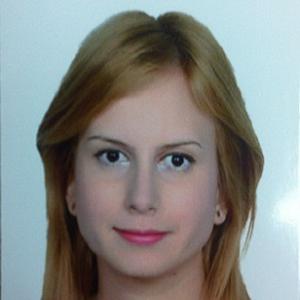
Study and development of wireless sensor network architecture tolerant to delays
Transport has become fundamental in the cities to the well functioning of the economy and the welfare of the city population. For several years, transportation faces many issues such as traffic jamming, high accidents rate, unhealthy life due to smoke and dust, air pollution as a result of carbon emission, etc. To deal with these matters, researches integrate digital technologies to ground transportation which is known as Intelligent Transport System (ITS). ITS can sense, analyze, collect, control and communicate different data. This thesis investigates and proposes a new protocol for data collection applications in an urban environment.
We make three main contributions: firstly, we propose a new protocol denoted the “Internet of Bikes” IoB-DTN protocol which applies Delay/Disruption Tolerant Network (DTN) paradigm to the Internet of Things (IoT) applications running a data collection application on urban bike sharing system based sensor network. The protocol is evaluated on a realistic scenario by assessing the buffer management policies, the number of copies sprayed in the network as well as the number of bicycles used. Secondly, a comparative evaluation of the performance of the multi-hop IoB-DTN protocol with a low-power wide-area network (LPWAN) technology, LoRa/LoRaWAN type is investigated. LPWAN have been designed to provide cost-effective wide area connectivity for small throughput IoT applications: multiyear lifetime and multikilometer range for battery-operated mobile devices. This part of our work aims at providing network designers and managers insights on the most relevant technology for their urban applications that could run on bike sharing systems. Finally, we propose an efficient IoB-DTN protocol based on data aggregation mechanism. We propose three variants of IoB-DTN: IoB based on spatial aggregation (IoB-SA), IoB based on temporal aggregation (IoB-TA) and IoB based on spatio-temporal aggregation (IoB-STA). We compare the three variants with the multi-hop IoB-DTN protocol without aggregation and the low-power long-range technology, LoRa type. Comparison results verify that the three variants of IoB-DTN based on data aggregation improve several metrics such as the delivery rate, energy consumption and throughput.

Ce stage a pour objectif la mise en place et l’administration d’un réseau d’objets connectés (IoT) ainsi que le développement d’applications qui seront utilisées au sein du réseau. Les objets reposeront sur le protocole 6lowpan (802.15.4 pour la couche PHY et MAC) pour communiquer. Enfin les objets déployés seront majoritairement des Raspberry PI 2 et 3 équipés de dongles pour émettre et recevoir les paquets. Un dernier objectif consistera à écouter de manière discrète le trafic ainsi généré par les applications.
Fiche complète ici : stage-6lowpan-citi
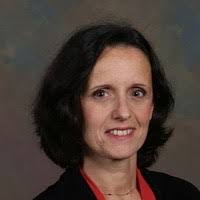
On combining Networking with Computing and Research with Innovation
Integrating virtualised network, caching and computing into one system is becoming a natural trend to support very demanding emerging mobile applications.
I have been exploring and contributing to these ideas since many years in the context of high-performance computing (HPC), DataGrids, Cloud infrastructures, Software as a service and the Internet of Things. In this talk, I propose to articulate the researches and developments I had the chance to conduct on this topic in academic, start-up and industrial environments, and to summarise the lessons learned from these experiences. I will then briefly present my new perspectives in the field of augmented intelligence for analysing and optimising fog systems integrating tightly networking and computing.
Pascale Vicat-Blanc is senior scientist at Inria. After a career as Assistant Professor at Ecole Centrale de Lyon, she joined INRIA at ENS Lyon. As the head of the RESO project team she has supervised a dozen of thesis on advanced networking and Internet protocols and co-authored 150+ articles. She had a leading role in many national and EU initiatives like eToile with EDF and CEA, DataGrid with CERN, Geysers with SAP or SAIL with Ericsson and Orange. She helped with the creation of the national Grid5000 instrument as well as of the INRIA-Bell Labs with Nokia. She received the Joliot-Curie Award from the Ministry of Research in 2011 and the Innovation Award from Académie des Sciences, INRIA and Dassault Systems in 2013. In 2010, with a team of four PhD students she launched the Lyatiss startup for valorising their research results in the domain of IT infrastructure virtualisation and orchestration. Then, they launched a SaaS (Software as a Service) company in USA, CloudWeaver, extending the technology developed by Lyatiss with TCP sensors and machine learning tools to provide network performance insights to AWS and GCE customers. Then, acquired by F5 networks (FFIV), they integrated CloudWeaver analytics pipeline with the F5’s MANO platform. After that, Pascale was appointed as the F5 IoT initiative leader to define the IoT strategy and products of the company. Since September 2018, Pascale Vicat-Blanc is back to France and INRIA. Member of the Agora team, CITI lab at INSA, she is starting new researches in the domain of fog computing and networking for smart cities.

C’est Lundi 3 Décembre au Tuba à Lyon, plus d’info ici.
Au programme :
• 09H00 – 19H00 | Atelier créatif : QUI VA PAYER LA VILLE INTELLIGENTE ?
• 19H00 | Carte-blanche à Marie-Cécile Paccard, designer : LA VILLE DE DEMAIN, PLUTÔT “SMART” QUE “BIG MOTHER” !
• 19H45 | Pop’Cast (émission radio participative) : BIG DATA EN VILLE – Opportunités et limites pour la vie privée et les biens communs.
• 21H15 | Ciné-débat : IS BIG DATA WATCHING US ? Black-mirror donne le change

The next CITI seminar will take place on October 10th, at 11am in the margin of Alexis PhD defense. This seminar entitled “Radio wake-up solutions: applications, standards and developments” will be presented by Josep Paradells Aspas from Polytechnic University of Catalonia.